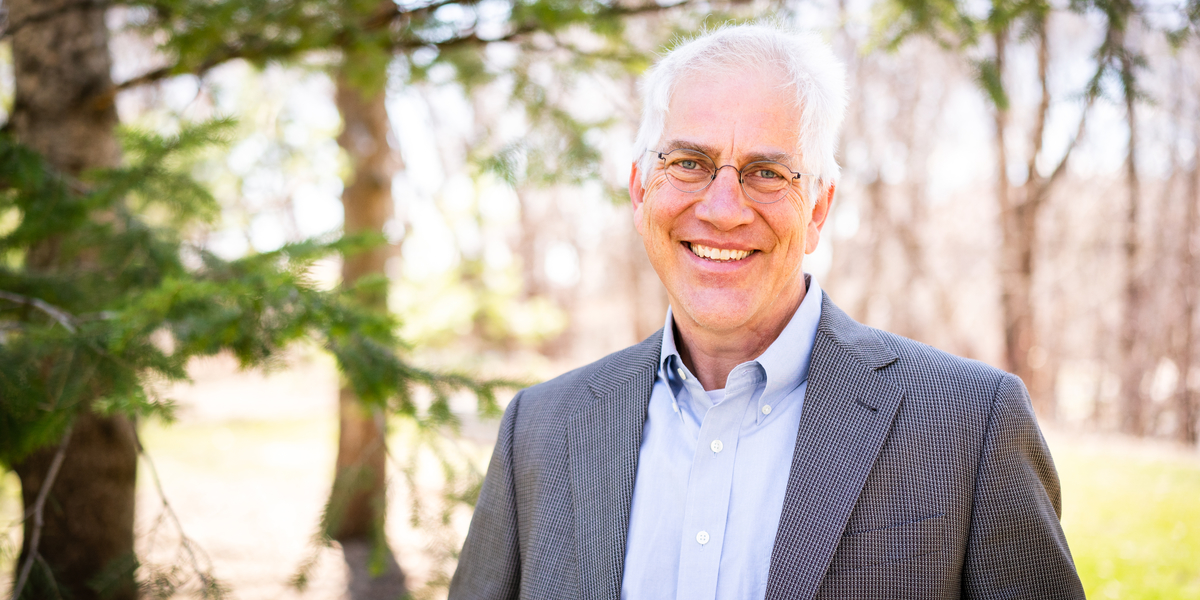
Ecology, Evolution and Behavior Professor Eric Seabloom has accomplished much in his nearly three decades as a community and ecosystem ecologist. He has advanced understanding of the role of disturbance in shaping grassland ecosystems. He has created mathematical models for incorporating disease into plant community dynamics. He has mentored more than two dozen graduate students and postdoctoral fellows who have gone on to be leaders of their own. But what stands out most for him is work he’s led with colleague Professor Elizabeth Borer to develop a long-term research collaboration that reaches literally around the world. This achievement is one of the main reasons he was recently awarded a Distinguished McKnight University Professorship — and one of the things he’s most proud of when he looks back over the years.
“The global research networks Elizabeth and I lead have served as a model for many other scientists to tackle global-scale questions without needing access to the massive budgets seen on most big projects,” he says. “This model has really empowered a lot of researchers throughout the world to do cutting-edge science.”
Grassroots research
Seabloom’s interest in ecology grew out of a childhood helping on his grandparents’ dairy farm in central Minnesota. As an undergrad he worked on his college’s organic farm, which in turn piqued his interest in conservation. After earning his master’s degree in environmental studies he worked for several years for government agencies, then returned to school to earn a Ph.D. There, he says, “the research bug got me.” Rather than continue in agency work, he took a research position at the National Center for Ecological Analysis and Synthesis at the University of California at Santa Barbara. It was there that he and Borer began collaborating on studies aimed at teasing apart complex relationships among diversity, productivity, nutrients and herbivory in the Earth’s ecosystems.
As part of their research, they worked with colleagues to synthesize studies across research sites around the world. While this work yielded exciting insights, they found themselves frustrated, because every study was conducted in slightly different ways. They realized we could learn so much more if we used a standard study design and sampling protocol. What if we could get scientists around the world to conduct exactly the same experiment and collect exactly the same data?
This “what if” must have been on a lot scientists minds, because this catalyzed the Nutrient Network (NutNet), the world’s first long-term, multi-continent ecological experiment. Today NutNet, as it’s known, and a companion research project, DRAGNet, encompass more than 200 sites in 40-some countries. The contributions of these collaborative networks to understanding complex ecosystem dynamics are seminal. Beyond that, they have introduced a whole new way of conducting collaborative research. The experiments are designed to accommodate limited resources using locally available, inexpensive research tools and supplies like fertilizer, fencing, shovels and rakes.
“More than the sites, this is a collaborative network of scientists working together to address exciting new questions in ecology,” Seabloom says.
The long game
Among the main reasons Seabloom came to Minnesota a dozen years ago were Cedar Creek Ecosystem Science Reserve, one of the world’s most well known ecological research sites and the community of top-tier ecologists who work at Cedar Creek. Research at the reserve focuses on long-term ecological changes, and some of the experiments have been running for over 40 years.
Today, as the reserve’s interim director, Seabloom is a powerful supporter of this type of research.“Ecosystems change slowly, and understanding them takes decades of work and multiple generations of scientists,” he says. “Like the NutNet and DragNet distributed experiments, the novel science emerges from the collaboration of scientists, and in this case the long-term collaborations of a group of scientists over multiple decades.”
Seabloom’s current research includes exploring the impact of plant diseases on ecosystems. Having developed mathematical models that include the flows of carbon, nitrogen and energy that fuel ecosystems, he and Borer are testing their predictions using long-term experiments at Cedar Creek.
Up next
Fresh off a yearlong sabbatical in the Netherlands and buoyed by the McKnight professorship, Seabloom is moving forward at full speed with research. Out-of-the-gate plans include testing the mathematical disease models on the ground at Cedar Creek and the first in person meeting of the DragNet network, which will bring 30 scientists from 10 countries to UMN this fall.
“The sabbatical was a chance to think about what I really find exciting in my job and the areas about which I am most passionate,” he says. “It’s really scientific enquiry and working with collaborators to advance understanding that I love the most. I want to continue focusing on this.” — Mary Hoff